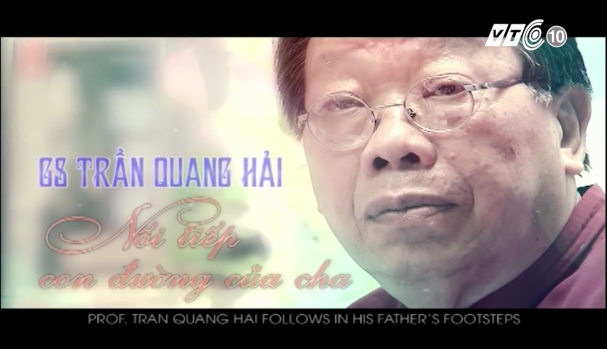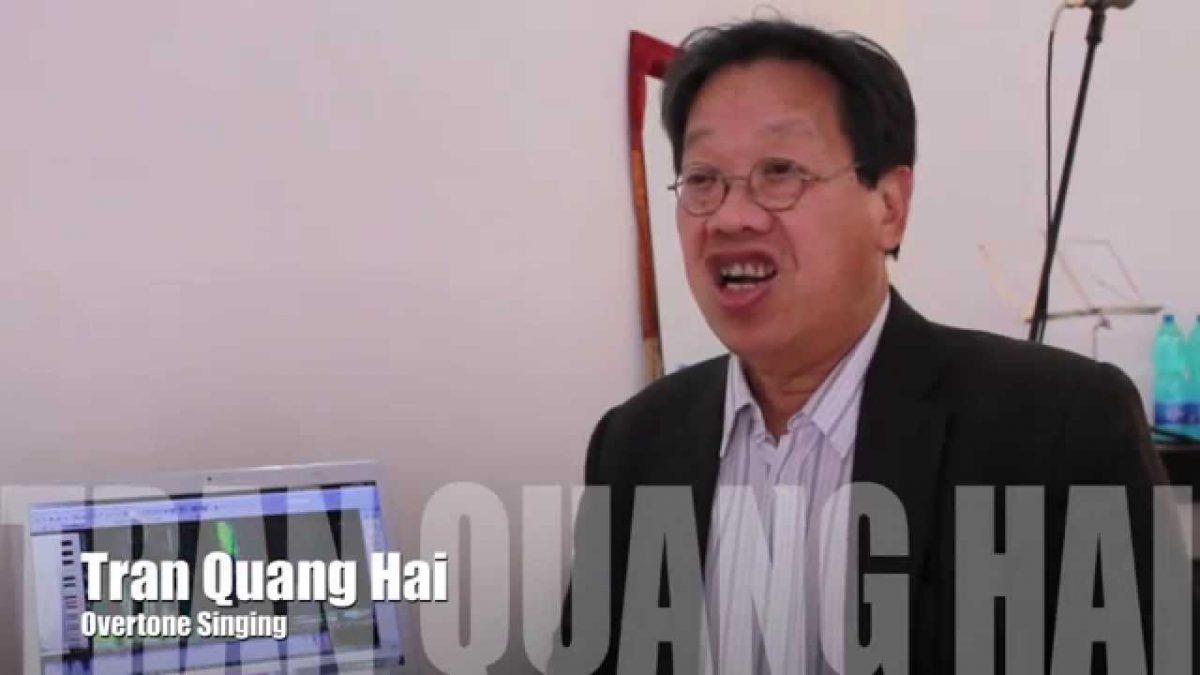427 vues•13 mai 2020170PartagerEnregistrerDawn Avery 184 abonnés
Category: SOUTH AFRICA
OVERTONE SINGING UMNGQOKOLO by Xhosa women from SOUTH AFRICA
OVERTONE SINGING UMNGQOKOLO by Xhosa women from SOUTH AFRICA
26,127 views•May 16, 2012 2587ShareSaveQuangHai Tran 6.26K subscribers Prof.Dr. Dave DARGIE made the best video recordings from 1985 to 1998 in South Africa with Xhosa female singers . To obtain more information about Umngqokolo – Thembu Xhosa – Overtone singing, please contact Prof.Dr Dave Dargie,Ostpreussenstr 81, D-81927 München, GERMANY or write to him : email: dave.dargie@t-online.de
Throat singing from different continents
A report on the Dave Dargie Collection. Written by Dave Dargie. Visiting Professor at the International Library of African Music, 2018.
A report on the Dave Dargie Collection. Written by Dave Dargie. Visiting Professor at the International Library of African Music, 2018.
Date Released: Fri, 31 August 2018 12:49 +0200
aA Report on the Dave “Dargie Collection” in the International Library of African Music by
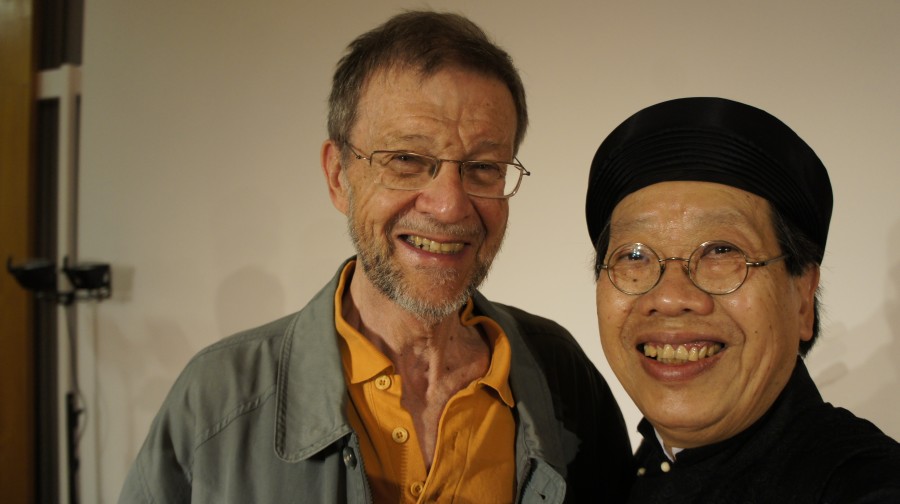
Prof. Dave Dargie & Prof. Tran Quang Hai
Dave Dargie, Visiting Professor at the International Library of African Music. 2018
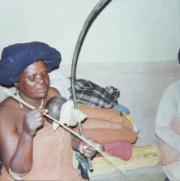
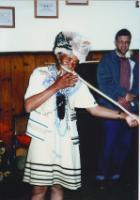
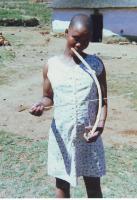
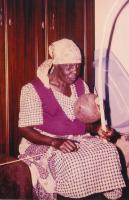
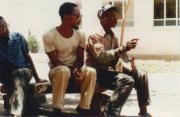
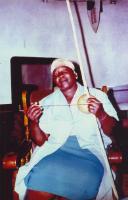
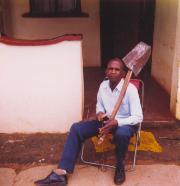
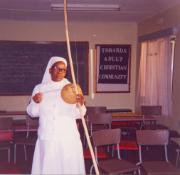
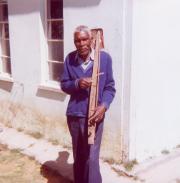
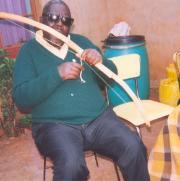
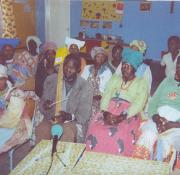
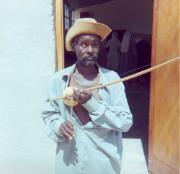
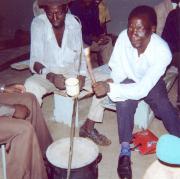
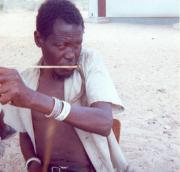
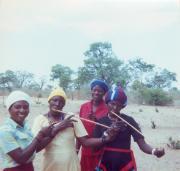
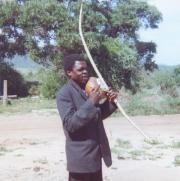
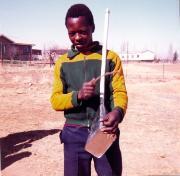

Photo Pastiche: Musical Bows Recorded in the “Dave Dargie Collection.”
Background to the Collection.
From the beginning of 1979 to mid-1989 I worked as an ethnomusicologist for the Catholic Lumko Pastoral Institute, situated until 1985 near Lady Frere in the deep rural amaXhosa area of the Eastern Cape. I travelled the length and breadth of South Africa, and also in Namibia, Swaziland, Botswana and Lesotho, conducting workshops at which local church members composed songs for use in church services. Having been made painfully aware by Andrew Tracey of the ILAM of the damage done to traditional music by missionary activities, I set my goal at trying to bring traditional musical styles into the church. In some areas the missionaries had turned the attitudes of their converts against the traditions and customs of their own people. In those areas my work was not easy, but in others the converts still lived close to the traditional way, and the missionaries often had a higher regard for rhythmic African music than for the dreary mission hymns. Many missionaries were extremely helpful in helping me to find and record traditional musicians. The most helpful of all was Benedictine Brother Clement Sithole, himself a traditional musician, player of the Zulu umakhweyane musical bow and a composer.
My goals were to promote the production of truly African church music, as far as possible in traditional styles, and then to record as much traditional music as possible, with the aim of filling in the gaps left by other and distinguished musicologists in the documentation of the music of the region. South Africa had not received as much attention as countries further north, and the music of the amaXhosa, the people of the area where I was born, had been relatively ignored, apart from some recordings made by Hugh Tracey in the 1950s. I had the great fortune to find an area of wonderful preservation of traditional amaXhosa music on our doorstep at Lumko, including the first documentation of overtone singing in traditional African music. By 1989 I had recorded music of many people of the region, making a special attempt at recording the musical bows. Not only is bow music most attractive, it has also provided the theoretical basis for the music of many people. I was fortunate to record a number of other musical instruments of the region, instruments which, like the bows, are either severely endangered or already extinct.
In 1996 I brought all my original recordings to ILAM, as I have continued to do with all the recordings I have made since then. With Prof. Diane Thram as director, ILAM undertook to digitise and so preserve all my recordings. In 2000 I had already begun to put my recordings onto CD (and later DVD), and to my delight ILAM took over these CDs, DVDs and the handbooks which I had written (and still writing) to document them. ILAM called this series the “Dave Dargie Collection”. Everything in the “Collection” may be obtained from ILAM, and also the hundreds of other recordings which have not yet been organised onto CDs or DVDs. All my digitised recordings may be obtained from ILAM through the internet. It will readily be appreciated how pleased I am that the musical treasures entrusted to me by so many people will be preserved for the future as part of southern Africa’s musical heritage, available to everyone and, I very much hope, giving the descendants of those musicians the opportunity to learn and perform the songs and instruments – and overtone singing – which either have already fallen into disuse or are seriously endangered, as is so much of the culture of the region.
Regarding the “Collection”, naturally the focuses of my work had a direct influence on what I recorded. My starting point with Lumko was to promote the composition of new church music, as far as possible in true African styles, by musically inclined church members. I needed to find ways to guide and inspire participants in these workshops, so early on I worked at developing methods of group composition, in which participants could work as a group to produce new songs. I used ways by which they could bring themselves from speaking to singing, because words in the languages of the people in my workshops were tonal. A crucial point in this was the workshop at Bunya in Kavango in 1979. There are audio and video recordings in the “Collection” demonstrating the process. I was given the task of bringing marimba xylophones into church music, because missionary converts had been set against the use of drums. Xylophones provided an excellent way to bring rhythmic music into church. We tuned the xylophones so that they could play both the Xhosa scale and the diatonic scale used in nearly all previously existing Xhosa church music. I learned to play the instruments and then to teach others to play them. I adapted songs to use with marimbas. Before I started with Lumko I developed a love of bow music from the Tracey recordings at ILAM. The bows played a huge role in the development of the traditional music of southern Africa. Wherever I went I tried to record bow music. I knew about the music of Ntsikana before I began with Lumko. I went hunting for survivals of it – and I found his Great Song used as an uhadi bow song in different ways. Whenever I could, I encouraged bow players to help with the composition of new church songs. And I went so far as to compose some myself. The next step was to adapt Ntsikana’s songs – and my own – to use with marimbas. It was a wonderful time. I felt as if blown along by what was happening without myself doing much about it.
It was very similar with my research into amaXhosa traditional music. First, and most unexpectedly, I found a marvellous preservation of ancient music all around Lumko. I found overtone singing. I drove myself to try and crack the incredibly complex uses of rhythm in the area. I learned to feel the cross-rhythms. I worked to bring rhythms into marimba playing which could prove worthy of the experts in rhythm with whom I was working. Nofinishi Dywili, the uhadi bow master and song leader of Ngqoko, Nowayilethi Mbizweni, the master of umngqokolo overtone singing – may they be remembered for ever (if possible) because of the recordings they gave me, and the same with all those talented and generous musicians with whom I had the great honour to work – all unexpectedly. Until I agreed to tackle the church music project I thought my calling was to be a composer. I feel only deep gratitude that instead I was given the task to turn hundreds of others into composers, and to have the chance to preserve their work and the work of many others. These and other factors influenced my recording work. I long for others to derive the same enthusiasms from the recordings which drove me to make them. And I feel everlasting gratitude to ILAM for enabling my work to be preserved, for it is not in fact my work. I was and am merely a catalyst who found the great happiness of working for other, highly talented people.
Here follows a list of what is in the “Dave Dargie Collection”. Many of the CDs and DVDs have accompanying handbooks, some have small booklets inserted in the disc case, others have only inserted leaflets. In addition to information, photos, and so on, some handbooks are song books with scores. Some have analytical score transcriptions. See also the bibliography at the end of the report for further written material by the author, relevant to the “Collection”.
THE MATERIALS IN THE “COLLECTION”.
To date the “Collection” contains 48 audio CDs, one CD ROM, 15 DVDs and 25 handbooks. I did more work on Xhosa music than on music in other languages, as is reflected in the lists below.
XHOSA.
The audio CDs and the DVDs in the collection have recordings of five Xhosa musical bows, umngqokolo overtone singing, songs and dances of all categories, including the use of drums. The CDs cover the period from 1979 to 2011, the DVDs, 1985-1998. Those accompanied by handbooks are indicated (H).
14 CDs of traditional amaXhosa music, as follows: “Nguwe lo!” (H) (intro. To amaXhosa music); “Umngqokolo I & II”(H); “Songs of Nofinishi Dywili I & II” (Uhadi bow songs and dance songs) (H); “Umrhubhe wemimangaliso” (Friction mouth-bow) (H); “Umzi kaMzwandile” (H) (songs illustrating complex use of rhythm); “Ngawol esiza” (H) (illustrating isiXhosa humour in song); “Emva ekhaya” (rec. in Ngqoko & Hogsback); “Ezona Ngoma zeNgqoko – The Best New Songs of Ngqoko” (Ngqoko Group); “New Sounds from Ngqoko 2005” (Ngqoko Group); “Zadeki” (concertina) (Ngqoko Group); “Ntsikana Music Collection 2000” (H) (Songs of the first amaXhosa Christian [d. 1821]); “Zenzeleni Group” (rec. Mkonjana village nr Bolotwa).
8 CDs of amaXhosa Zionist (Indigenous Church) music: 7 CDs of the “MICC Series”, numbered 1, 2, 3A, 3B, 4 & 5, 6A and 6B (H) plus “Culani namaZiyoni – Sing with the Xhosa Zionists” (H = handbook/song book) (& see DVD below).
3 other CDs: Performances and new compositions of Fort Hare University music students (isiXhosa): 2 CDs: “Freedom Fort Hare”; “Fort Hare Celebration”. Pronunciation guide: CD: “Xhosa Pronunciation for Singers”.
10 DVDs of traditional music: Music in Ngqoko: “Xhosa Music Introduced by Dave Dargie” (video recordings of trad. musicians, plus explanations by D. Dargie in separate titles); “Xhosa Music Part 2” (following the first DVD); “Concert at Ngqoko” and “Performance at the Home of Nofinishi Dywili” (H) (2 DVDs, one handbook, videos made outside and indoors); “Umngqokolo – The DVD” (compilation of all the video recordings of Xhosa overtone singing made by D. Dargie); “Versions of Ntsikana’s Song” (Ngqoko, Mackay’s Nek &c) (Songs of the first Xhosa Christian – bow songs, church performances etc – see CD “Ntsikana…”); “Xhosa Zionist Church Service in Ngqoko” (H) (with the MICC Series – see CDs above). Music in Hogsback: “Isiphutumo at Seysey’s” (H) (installation of a Xhosa diviner); “Two Imigidi at Hogsback” (music at traditional feasts); “Xhosa Music in Hogsback” (H) (bow songs, performances by the group iHogsback Club).
One DVD is designed as an introduction to isiXhosa music (“Xhosa Music Introduced by Dave Dargie”) and one CD with accompanying handbook is similarly designed with selected recordings of instruments, overtone singing and techniques (“Nguwe lo!”) There are 9 handbooks accompanying the CD recordings and 4 with the DVDs. There is a further CD on isiXhosa pronunciation (for singers) and a further handbook on amaXhosa music terminology.
OTHER LANGUAGES.
ZULU: 3 CDs (with handbook) of traditional isiZulu bow songs, one CD (with handbook) of Brother Clement Sithole’s neo-traditional church compositions, one CD of Father Paul Thembayona Manci’s church compositions: plus other recordings on the compilation discs below.
NAMIBIA: One CD of church compositions, many in traditional styles: “Missa Namibia”; 2 CDs of the Bunya Composition Workshop of 1979, illustrating working techniques and with the compositions, plus handbook with information and song scores; one CD “Musical Bows of Namibia”; plus other recordings on the compilation discs. DVD: “Church Music in Namibia 1988”. Both audio and video material from Namibia, are on the compilations discs (see below).
TSWANA: 2 DVDs: “Tswana Music – Traditional and (Neo-)Church”; “Ga-Rankuwa Church Music Festival 1989”. Other seTswana material is on the DVD “Composing with Traditional Musicians” (compilation DVD – see below), and on the compilation CDs.
COMPILATION CDs.
“Tsonga Xitende, Swati Makhoyane”: recordings of the braced calabash bow (called umakhweyane in Zulu): 3 performers – 2 Tsonga, 1 Swati.
“New World, Ancient Harmonies”: mbira types, xylophones, bows, Jew’s harp: Kavango (Namibia), N. Sotho, Venda, Lozi (Caprivi), Tswana.
“Magical Musical Bows”: various peoples; examples of all 21 musical bows recorded by the author in South Africa and neighbours; with handbook.
“Drums and Dances”: Drum songs and dances: amaXhosa, amaZulu, seSotho, N. Sotho (incl. sePedi), seTswana, xiTsonga, tshiVenda & Kavango (various languages); plus ruwenge Jew’s harp (Kavango, Namibia) which imitates drums.
“Morena ke Thebe”: church songs by traditional musicians and in traditional styles, various languages.
“How long? How long?” Freedom songs and freedom prayer songs, various peoples, with handbook/song book.
“Dave Dargie Photo Display”: CD ROM with 161 photos, 4 Music CDs illustrating the photos, one guide handbook and one handbook on musical instruments of the region.
COMPILATION DVD: “Composing with Traditional Musicians”: The DVD contains videos made at three composition workshops run by D. Dargie, at Andara (Kavango – thiMbukushu), with thishandzhi mibra and drums (1988), at Mahalapye, Botswana (seTswana) with segankuru bow (1989) and at Mooketsie nr Tzaneen, with xitende bow (1988).
WORKSHOP MATERIALS.
I conducted scores of church music composition workshops in the period 1977-1989. I also introduced the use of marimbas into South Africa, distributed and taught marimba playing in many places from 1979 to the present. Other workshops conducted up to the present are for teaching and learning African songs, drumming and dancing. Materials developed for these purposes and reflecting this work are as follows:
Audio CDs: African Church Music: “Sing an African Song” (H): CD of selected songs for introducing learners to African music, with handbook/songbook; “African Sunday Marimba Mass” and “Lumko Marimba Mass” (H): 2 CDs of church marimba songs with accompanying handbook/song book; “Xhosa Pronunciation for Singers” (mentioned also above), to help singers learning the new Xhosa church songs. Musical bows: “Make and Play your own Musical Bow”: CD (H) with handbook/music exercises for learning to make and play the umqangi percussion mouth bow and the uhadi calabash bow; 2 CD and handbook set “Bunya Workshop 1979 Shelf Recordings and Compositions” (ruKwangali language, Kavango): one CD with recordings made during the group composition process at a key early workshop of the author, the other CD with the finished compositions, description, information etc plus song scores in the handbook.
DVDs: “Composing with Traditional Musicians” (see under “Compilation DVDs” above): video recordings demonstrate the methods of composing new songs by group composition and with the help of traditional instrumentalists. Marimba Playing: “The Lumko Marimbas 1979-2017”: video recordings of the early days of the “Lumko” marimbas, with handbook with information, music scores etc. “Xhosa Music Introduced by Dave Dargie”: DVD designed for teaching/learning traditional Xhosa music, with recordings of traditional music and explanations/demonstrations by the author in separate titles, including demonstrations of musical bows uhadi and umrhubhe/umqangi.
References and Bibliography of Materials by D. Dargie relevant to the “Collection”.
Book.
Dargie 1988: Xhosa Music, its techniques and instruments, with a collection of songs: David Philip: Cape Town.
Articles.
The Work behind the Collection.
2016: “Building on Heritage, Preserving Heritage: Music Work in Southern Africa, 1976-2016,” in Collegium, 21, 163-188: Internet link for whole journal: https://helda.helsinki.fi/handle/10138/167892.
isiXhosa Music.
1982: “The Music of Ntsikana”, in SAMUS, 2, 7-28.
1991: “Umngqokolo: Xhosa overtone singing”, in African Music, vol. 7, no 1, 32-47.
1998: “Hidden words of the Prophet: texts appearing in traditional versions of the songs of Ntsikana,” in Missionalia, 26, 3, Nov. 1998, 342-57.
2010: “Xhosa Zionist Church Music: A liturgical expression beyond the dreams of the early missionaries,” in Missionalia, 38, 1, April 2010, 32-53.
2010/11: “The redoubtable Nofinishi Dywili, uhadi master and Xhosa song leader”, in SAMUS 30/31, 1-30.
2011: “The Xhosa Umrhubhe Mouthbow: an Extraordinary Musical Instrument,” in African Music, 9, 1, 33-55.
2013A: “Nank’ uDisemba: Songs of the Lumko district showing the difficult life of rural Xhosa unmarried women,” in Journal of the Musical Arts in Africa, 10:1, 1-32: Internet connection http://dx.doi.org/10.2989/18121004.2013846967.
2015: “Cracking the Rhythm Codes in the Music of the Lumko District”, in South African Music Studies (SAMUS) 34-35, 171-207.
isiZulu Music.
2007: “Umakhweyane: A Musical Bow and its contribution to Zulu Music,” in African Music, 8, 1, 60-81.
Kavango Music (various languages).
2008: “Ruwenge: The discovery of an African Jew’s harp constructed with a frame”, in SAMUS, 28, 119-134.
2013B: “Kavango Music,” in African Music, 2013, 9, 3, 122-150.
There are a number of relevant papers by the author in the Papers Presented at the Symposiums on Ethnomusicology, published by ILAM. See also “Bow Songs as Carriers of Heritage” in First International Bow Music Conference Proceedings, ILAM, 2017, 1-14.
Source:ILAM
https://www.ru.ac.za/ilam/latestnews/reportbydavedargie.html
Throat singing from different continents
JACQUELINE KANIA : The Phenomenon of Throat-Singing
The Phenomenon of Throat-Singing
Below is definitely one of the more memorable videos from class and my previous blog. As unique as the performance is, the Inuit are not the only groups with this throat-singing tradition.
Click here to view the embedded video.
The Basics
Throat-singing is a “guttural style of singing or chanting” and “one of the world’s oldest forms of music” according to a Smithsonian Folkways webpage about the culture surrounding it (http://www.folkways.si.edu/explore_folkways/throat_singing.aspx). In the Western world, most people only hear or imagine singers to be singing one note at a time, however we have multiple vocal chords that can actually produce different pitches simultaneously. Throat-singing is most often seen in the countries of Central Asia—especially among the Tuvans on the Southern Russia/Northern Mongolian border. However there are two other groups, the Xhosa people of southeastern South Africa and the Inuit of Northern Canada, who also practice throat-singing in different settings and among different groups of performers. Throat-singing even has a place in popular music and television—we shall see some examples later in this post.
The Smithsonian Folkways article goes into more detail about these groups. Let us take a look at the three primary practicing groups of throat-singing:
The Tuvans
Tuva is a predominantly rural region of Russia located northwest of Mongolia. They call throat-singing Khoomei. Khoomei performers are primarily male due to a superstition that throat-singing women will have fertility problems. They are also taught to throat sing from a young age. The Khoomei throat-singers use a form of circular breathing which allows them to sustain singular notes for longer periods of time. The Tuvans originate from a hunter-gatherer lifestyle and the sounds they make, such as the Tuvan singing group Huun Huur Tu playing in the style of “Sygyt” (or “whistle”) below at a Philadelphia Folk Festival in 2006, are very reminiscent of the nature that surrounds them:
Click here to view the embedded video.
According to the article “Overtone Singing Music” on National Geographic’s Music webpage, the Tuvans separate various overtone styles into 3 categories based on what part of nature they imitate: Sygyt, which imitates birds and breezes/gentle winds. Xoomei alludes to stronger winds, and kargyraa is meant to portray storms (http://worldmusic.nationalgeographic.com/view/page.basic/genre/content.genre/overtone_singing_763/en_US).
While not raised in the Tuvan culture, a YouTuber named Alex Glenfield has taught himself how to master several types of overtone singing. In the video below he demonstrates 7 styles: the classic Khoomei style at :10, Sygyt at 1:08, Dag Kargyraa at 2:11, Steppe Kargyraa at 3:12, Ezenggileer at 4:05, Khoomei Borbangnadyr at 4:47, and the Chylandyyk at 5:35:
Click here to view the embedded video.
The Inuit
The Inuit are the indigenous native people of northern Canada. In contrast to the throat-singing of the Tuvans, Inuit throat-singing (also called katajjaq) is almost always performed by females. It is often performed in groups of two or more women, and the techniques used are reliant upon staccato, rhythmic inhalations and exhalations of the breath. The tradition with Inuit folksinging originated as a competition or a game among female friends while the males were out hunting for the families. Over a century ago Inuit throat-singing was condemned by local Christian priests, but it is gaining a recent revival among the youth of Canada. Performers even submit throat-singing audition tapes to be shown at the Winter Olympic games.
The clip shown below is of two Inuit women, Janet Aglukkaq and Kathy Keknek, filming a throat-singing audition tape for the 2008 Winter Olympic Games:
Click here to view the embedded video.
The Xhosa
The Xhosa people of Bantu origins live and thrive in southeastern South Africa. Nelson Mandela and Desmond Tutu are famous Xhosas. Their style of deep throat-singing, called eefing, is composed of singing two notes that are only a step apart accompanying much higher notes simultaneously. The singing accompanies traditional call-and-response (antiphony) or group songs. The Xhosa often use these songs for joyful occasions such as parties and dances.
Shown below is a clip of Xhosa women practicing eefing:
Click here to view the embedded video.
Here is another clip. The blonde woman is Kendall, the assistant producer of a play called “MoLoRa” that is based in Johannesburg, South Africa. She enlists this Xhosa group of women, called Ngqoko, to help provide musical clips for her play. In her interview with them around 2:31, they begin harmonizing together:
Click here to view the embedded video.
Throat-Singing in the Western World/Culture:
Chances are if you have heard of throat-singing prior to this blog, you are a watcher of The Big Bang Theory, a well-known American sitcom series. In the episode “The Large Hadron Collision” one of the main characters Sheldon, a quirky but highly intelligent man, demonstrated his skill of Tuvan throat-singing:
Click here to view the embedded video.
The substyle of Tuvan throatsinging Sheldon performs above is Dag Kargyraa.
Throat-Singing has been sampled throughout a few popular Western artists’ songs as well. New-age and folk-tunes singer Bjork enlisted the help of Inuit throat-singer Tanya Tagaq in her song “Isobel” (Tanya Tagaq can be clearly heard starting around 2:30):
Click here to view the embedded video.
A blind blues guitarist named Paul Pena, who wrote the 1970’s Steve Miller Band hit “Jet Airliner” and was the former sideman to famous blues artists B.B. King and John Hooker, was listening and messing with the wires of his radio in 1984. He accidentally tuned into a station featuring the Khoomei throat-singing styles of Tuva, and was stunned. This occurrence started him into an 11-year journey to study throat-singing, and eventually he was able to master several styles and starred in a documentary called “Genghis Blues” (“Genghis” from the belief that many Tuvans were descendants of the infamous leader Genghis Khan.) The article about Paul Pena can be found on genghisblues.com under the article “Blind U.S. bluesman masters throat-singing of Tuva”.
Quick Summary:
To summarize this post, while throat-singing may not be extremely popular in the Western music and popular culture world, it is certainly not a new style by any means. I believe more artists (particularly new-age, country and blues artists) will begin to learn these techniques. I hope you have learned many new facts and have a new appreciation for this unique vocal style. Thanks for reading my final blog!
Works Cited:
Alex Glenfield. ” Seven Styles of Overtone Singing (Tuvan Throat Singing).”Online video clip.
YouTube. YouTube, 22 Mar. 2010. Web. 28 April 2013.
Ari Vineberg. ” Inuit throat-singers from Nunavik.” Online video clip. YouTube. YouTube, 08 Feb. 2011. Web. 28 April 2013.
“Blind U.S. bluesman masters throat-singing of Tuva.” Wadi Rum Productions. Genghis Blues, 1999. Web. 28 April 2013.
Cultureproject. ” “We can even teach you.” – Ngqoko Cultural Group.” Online video clip.
YouTube. YouTube, 15 July 2011. Web. 28 April 2013.
FrancesWindward. ” Inuit Throat Singing: Kathy Keknek and Janet Aglukkaq (long).” Online video clip.
YouTube. YouTube, 13 Dec. 2007. Web. 28 April 2013.
Kevinambjork. ” Björk-Isobel-Live at Belgium 2001-With Tanya Tagaq -Isobel-Live at Belgium 2001-With Tanya Tagaq.” Online video clip.
YouTube. YouTube, 26 Sep. 2011. Web. 28 April 2013.
Matias Martinez. ” Sheldon Cooper Throat Singing.” Online video clip.
YouTube. YouTube, 09 Feb. 2010. Web. 28 April 2013.
“Overtone Singing Music.” Bruce Miller. National Geographic Music, n.d. Web. 28 April 2013.
QuangHai Tran. “OVERTONE SINGING UMNGQOKOLO by Xhosa women from SOUTH AFRICA .” Online video clip.
YouTube. YouTube, 16 May 2012. Web. 28 April 2013.
Smithsonian Folkways. “Throat Singing:A unique vocalization from three cultures.” Smithsonian Folkways by the Smithsonian Institution (2013): n. pag. Web. 28 April 2013.
Tantsev. ” Huun Huur Tu at Philadelphia Folk Festival, August 2006.” Online video clip.
YouTube. YouTube, 15 Sep. 2006. Web. 28 April 2013.
Dave Dargie :“Some recent developments in Xhosa music : activities of the Ngqoko Traditional Xhoa Music Ensemble,and at the University of Fort Hare”.
Dave Dargie, Professor of Music, University of Fort Hare, South Africa.
Paper for ICTM, Vienna 2007.
The Xhosa and the Thembu Xhosa
The Xhosa of South Africa are the southernmost Bantu language people. They are part of the Southern Nguni people, as are the Zulu, the Swati and the Ndebele. Xhosa is one of the eleven official languages of South Africa. South African President Thabo Mbeki is a Xhosa, as also is ex-president Nelson Mandela, Archbishop Desmond Tutu, the singer Miriam Makeba, among many other famous Xhosas.
Being the southernmost means that in their long trek from the West African sources of their distant ancestors, the Xhosa probably came into contact with more other peoples than did any other Bantu language and culture group. In the stormy years of the 19th century, with the population movements caused by the wars of the Zulu King Shaka, other groups of peoples also moved into the area which is now the Eastern Cape Province of South Africa, and which has been the ancestral home of the Shosa for probably the last thousand years. Today one can distinguish about twelve groups of peoples who make up the Xhosa. One of these groups is the Thembu Xhosa. Nelson Mandela is a Thembu, as also was Walter Sisulu, who for so many years was Mandela’s fellow-prisoner on Robben Island.
When one of Shaka’s armies entered the Thembu area in 1828, it caused some of the Thembu to moves westwards across the Tsomo river for the first time. This brought them into intimate contact with Bushman people in that area. Contact with the Khoi and the Bushmen (1), who inhabited South Africa for thousands of years, profoundly influenced the Nguni peoples, but the Xhosa most of all, affecting their language, their culture and their music. Of all the Bantu language peoples of Southern Africa, the Western Thembu Xhosa had the closest contact with Bushmen, living side by side with a Bushman group for part of the 19th century, with intermarriage also taking place, until disputes over cattle caused the Thembu to drive away their Bushman neighbours around the middle of the 19th century (2).
Thembu Xhosa Music : instruments, singing and overtone singing.
The musical instruments of the Xhosa are not unique. The most important instruments are the musical bows, especially uhadi, a large unbraced bow using a calabash resonator and played by percussion. It is almost certain that the ancestors of the Nguni brought this bow with them down from the far north . The Zulus and the Swati calli ugubhu. The Sotho in Lesotho, who call it thomo, may have got it from the Xhosa. It is this bow which has given the Xhosa their musical scale and harmony (3). Interestingly, the Zulu play the bow differently from the Xhosa, thereby driving a differrent scale (4).
The Xhosas, unlike the Zulus, use the same scale and harmony system with all their musical bows. These include umrhubhe, a friction mouth bow (called umhubhe in Zulu), umqangi, a mouth bow played by tapping (the same bow is called umqangala in Zulu), a mouth bow played by plucking, called inkinge (identical to the Kavango rugoma) , and a bow-type instrument called ikatari, which is made by inserting a bow into a five litre oil tin as resonator and is played by bowing the string with a small bow of fibre or animalhair (this instrument was undoubtedly derived from the Sotho of Lesotho, who call it ekatara). A lot more could be said about these instruments, the other names by which some Xhosa people call them, and the various peoples who use them, but this paper is not the place for that (5).
What is unique to the Xhosa, and possibly the Thembu Xhosa in particular, is the types of overtone singing called umngqokolo. I gave a paper on umngqokolo overtone singing at the ICTM conference in Berlin in 1993, describing how I had the great good fortune to discover it in the Lumko district in 1980 (6). Since 1993, I have found further examples of umngqokolo, but always performed by Thembu singers. Whether any other Xhosa group practise overtone singing is not clear.
Thembu music features two further style characteristics of great sophistication. One is the use of extremely complex rhythm, the other is the use of a great number of polyphonic parts in certain songs. It is my conviction that the use of overtone singing, and the advanced uses of rhythm and polyphony all came to the Thembu through their contact with the Bushmen. The fact of the fairly prolonged contact between western Thembu and Bushmen, and the terminology for instruments and techniques, indicate this. Click consonants, and the use of the guttural consonant rh, indicate Busman or Khoi origins in the terms umngqokolo, umrhuble, umqangi and various other terms. Again, space in this paper does not permit of a detailed argument. But please see the book Dargie 1988.
Preservation and Development
In 1979, I started work running a church music department for the Catholic Lumko Institute, at that time based in the Western Thembu area (7). To try to get into African music, I began to research the music in the area around Lumko. My Lumko colleagues warned me not to expect to find much. Lumko mission, at which the institute was situated, had been there over fifty years, and they suspected that missionary activities had effectively killed off traditional music in the surrounding area. Most fortunately, this was not the case. The area was a centre of remarkable preservation of traditional Thembu music, with instruments and techniques in wonderful use, and a host of fine songs of various types being sung lustily by old and young. I obtained many remarkable recordings and came to know a number of master musicians. In Ngqoko village, 2 kilometres from the institute, there was Mrs Nofinishi Dywili, song leader and master performer on the uhadi – the large musical bow using a calabash resonator. Her daughter Nongangekho played the umrhubhe mouth bow, using overtones of the bow to follow the melodies of the song leader and simultaneously whistling the melodies of answering singers. There was Mrs Nowayileth Mbizweni, master of umngqoko overtone singing, not only the “ordinary” umngqokolo practised at that time by many women and girls, but also of the marvellous and rare technique which she called umngqokolo ngomqangi, which imitate the umrhubhe /umqangi musical bow and produced loud and clear overtone melodies. There was Mrs Nokontoni (who later was called Nokoleji) Manisi, chief diviner and leader of divination ritual, assisted by song leader Mrs Nosomething Ntese. The was Mrs Nolineti Ntese, an excellent dancer . Mr Mpharholo Manisi recorded songs for me with uhadi. Young Mlamli Dlangamandla was a master performer on the ikatari, a type of friction bow with bow stick inserted into a five litre oil tin as resonator, at that time played mostly by herd-boys. There were many other musicians in Ngqoko, and a few kilometres down the valley in the area called Sikhwankqeni there were more. In 1981, across the mountain about ten kilometres to the west at Mackay’s Nek, I was able to record historic performances with uhadi bow of the song of Ntsikana (the first Xhosa Cristian, d.1821), and in 1983, I recorded further performances of this song with uhadi in Ngqoko as well. The whole area was a treasury of traditional music.
The Ngqoko Xhosa Traditional Music Group
Several times, the first in 1981, musicians from Ngqoko and Sikhwankqeni performed at Rhodes University in Grahamstown, where I was registered for my Ph.D. After various performances in South Africa, nine musicians from Ngqoko were invited to Paris, France, in 1989 to perform at the annual Autumn Festival. These musicians of Ngqoko, with some others, formed themselves into what they now call the Ngqoko Cultural Group, which I prefer to call more specifically the Ngqoko Xhosa Traditional Music Ensemble. The number in the group varies usually from about 10 to 12. For many years the group has had the services of local schoolteacher Mr Tsolwana Mpayipeli, who has ofter acted as research assistant for me, as their organiser and manager. He has done an excellent job. At times the only one in the group who could speak English, he is himself a fine performer of traditional songs and dances. He has seen the group safely on at least eight overseas performance tours, to various countries in Europe and once also to Reunion island, as well as to numerous performances all over South Africa .
While the group has been winning acclaim for their music, the music itself is being gradually eroded in the area around Ngqoko. Xhosa songs are of their essence tied to the rites and ceremonies for which they are used. As rites and ceremonies fall into disuse, so the songs can disappear. As radios and ghetto-blasters proliferate, so the traditional instruments are pushed out . An important factor has been the sheer cost of certain rites and ceremonies. For example, traditional wedding (uduli), with feasts lasting for days, now takes place very rarely. The form of marriage used most frequently now is umtshato, which has some traditional elements, but is based on church marriage practices, and is usually over in one day . In the past, boys initiation lasted weeks, with the boys being taught traditional men’s behaviour, and with a variety of rituals. It is now simply too costly to keep the initiands in the bush for such a long time, so certain rituals are no longer practised. The umtshilo dances from boys initiation are a thing of the past in Ngqoko. Some years ago, when I asked Tsolwana Mpayipeli, about a favourite song of mine, a boys’ stickfighting song from Ngqoko and Sikhwankqeni, he told me sadly that nobody is singing it any more. Whether the crackdown by the police on stickfighting has anything to do with this, I don’t know .
The Ngqoko Group and Preservation .
Songs and musical practices will be kept alive if there is a reason for them. If a rite falls into disuse, so do its songs. When the main home entertainment is the radio, bow playing is neglected. The process can be reversed if a new reason for the music can be created. Fortunately, in the poverty-stricken Eastern Cape, opportunities have been opening for people to earn money by performing traditional music. That was exactly the case with the Ngqoko Group. Since the late 1980s they have been earning money by their performances, in South Africa and abroad, and in them the music has been kept alive. One of the first significant adaptations they made was to arrange their music for performance into a concert format . The various sections of the concert were based either on collections of songs for certain dance rituals (boys’ and girls’ dances, young men’s dances, diviners’ dances, beer dances) or songs performed with instruments and also with overtone singing .
In March 1996, I videoed the Group performing a typical concert in Ngqoko (8). The program was as follows: Songs for the women’s umngqungqo dances at girls’ initiation, songs for the young men’s dance party (intlombe yabafana), songs with umrhubhe mouth bows, songs with the uhadi calabash bow, diviner’s dance songs, songs for the boys’ and girls’ umtshotsho dances, songs with overtone sing (“ordinary” umngqokolo and umngqokolo ngomqangi.), beer dance songs, and songs with the ikatari bow type instrument. Nofinishi Dywili, doyenne of the group, was the uhadi master, Nowayilethi Mbizweni the overtone singing master. Several other women in the group could also perform the “ordinary” umngqokolo. In the beginnings of the group, the umrhubhe player was Nofinishi’s daughter Nongangekho (who later changed her name to Nothembisile Ndlokose). But by 1996 the group had discovered a more expert umrhubhe player and master of the whistling technique, Nogcinile Yekani, and with her also Nokhaya Mvotyo, who was learning from her . For the concert in 1996, two young men, relatives of group members, were persuaded to join in; one of them could play the ikatari .
The performers were as follows (all women except where indicated) : Nofinishi Dywili played the uhadi and led certain umngqungqo and beer songs;Nowayilethi Mbizweni led both types of overtone singing and played the igubu percussion drum, Nokoleji Manisi, the chief diviner of Ngqoko, led the diviner’s rituals ; Nogcinile Yekani and Nokhaya Mvotyo played umrhubhe; Nosomething (Nosamutingi) Ntese led certain songs, performed “ordinary” umngqokolo and was learning (and performed) umngqokolo ngomqangi, and Mr Sandisile Ntese played ikatari. Others performing were Nofenitshala Mvotyo (apprentice diviner, and playing umasengwane friction drum), Amelia Nosilence Matiso (retired teacher and assistant organiser of the group), Nothembisile Ndlokose (daughter of Nofinishi), Nolineti Ntese (dance specialist, body bells, and ignubu drums), Mr Sakumzi Mbizwezni and Mr Tsolwana Mpayipeli (group organiser, also dancing with body bells). There were thirteen performers in all .
From the early on I had encouraged the group members to teach and learn the specialist techniques. I had especially urges Nowayilethi to teach others the umngqokolo ngomqangi, and by March 1996 she had had some success with Nosomething. Nosomething had als made a start with uhadi, and recorded two songs near the end of the concert. Nogcinile had been helping Nokhaya improve her umrhubhe playing .
The next time I took the video camera to Ngqoko was in 1998, when I made two visits. On both occasions I videoed indoors at the homestead of Nofinishi Dywili. By 1998 the group had discovered an expert ikatari player in Ngqoko – Mr Sponono Klaas. Sponono was also able to perform another type of overtone singing called ukutshotsha (so called because in the past it was performed by boys at umtshotsho dances). Ukutshotsha is not as developed as umngqokolo ngomqangi. It rresembles more the “oridnary” umnqgokolo, but is somewhat different . Sponono performed for both the performances at Nofinishi’s .
The first performance at Nofinishi’s was on 27 january 1998 (9). Sadly, some of the 1996 performers had died: Nokoleji Manisi, chief diviner, Mrs Matiso, the former schoolmaster, and Nofinishi’s daughter, Nothembisile Ndolkose. Some of the group were away. Those who took part were Nofinishi Dywili, Nowayilethi Mbizweni, Nogcinile Yekani, Sponono Klass, Nosomething Ntese, Nofenitshala Mvotyo, Nolineti Ntese and Nokhya Mvotyo. Both Nowayilethi and Nogcinile had made significant progress in teaching their specialities to other group members, and this success had been further built on when I came on 5th November 1998 to record the then full group.
On 5th November 1998 it was a foul day at Ngqoko, with the wind howlong around the village and clouds of dust flying around enveloping the houses . But by then electricity had been laid on to Ngqoko, as with many rural villages as part of the new government’s program of reconstruction after South Africa’s first democratic election in 1998. So once again I videoed indoors, in one of Nofinishi’s round houses which now had a power point . With the video light now woriking on full power, I was able to get marvellous close-up material of the performers (10). The performers were eleven : Nofinishi Dywili (uhadi), Nowayilethi Mbizweni (ovetone singing specialist), Nogcinile Yekani (umrhubhe whistling technique specialist), Nolineti Ntese, Nofirst (Nofirsti) Lungisa ( a long-time member of the group who had been away in 1996 and in January 1998), Nopasile Mvotyo (a new recruit to the group), Nokhaya Mvotyo, Nofetishala Mvotyo (who after the loss of Nokoleji would lead the diviners’ rituals), Nosomething Ntese, Sponono Klass( ikatari and ukutshotsha), and Tsolwana Mpayipeli, the group organiser.
Among the many exciting aspects of this performance were that six of the women had learned umngqokolo ngomqangi from Nowailethi: Nosomething Ntese, Nofenitshala Mvotyo, Nokhaya Mvotyo, Nofirst Lungisa and Nolineti Ntese.. Each in turn demonstrated her skill for the camera. In addition, two of the women had learned the umrhubhe whistling technique from Nogcinile Yekani: Nokay Mvotyo and Nolineti Ntese. Nofenitshala Mvotyo was also learning from Nogcinile . She had learned to play using the bow overtones, but still had to learn to add the simultaneous whistling. These three too demonstrated their new skill. For one song, the remarkable Umzi kaMzwandile, which has forty or more different text lines, each with its own melody, and which can all be sung at the same time, Nokhaya and Nogcinile played two umrhubhe bows (plural = imirhubhe) in duet, while the others sang in continuous overlapping polyphony. This song has a remarkable cross-rhythm, an equalised 10-beat melody against an 8-beat clap/dance rhythm (see the example below. Nokhaya played the 10-beat pattern, and Nogcinile the 8-beat. Both bows can be seen on the video, with the players’ hands moving to the different rhythms.
Also on the video Sponono plays his ikatari and demonstrates his ukutshotsha overtone singing. This whole performance was also organised like a concert, but, being indoors, the dancing was very restrained. I stood in the middle of the performers with the camera on my shoulder, and got as close as I could in order to show the singing and bow techniques, and the use of typical Xhoa cross-rhythms.
Losses as well as achievements and new developments
The worst losses suffered by the Ngqoko Group have been through the deaths of key members. Soon after the 1998 recordings, Sponono Klaas died suddenly. The next to go was Nofinishi Dywili in 2002. I had recorded a CD with her and the group at Fort Hare University in February 2002 (11), and not long afterwards I went with the group to a performance at a school at the coastal village of Cintsa east of East London. That was the last time I saw Nofinishi. When the group was in Cape Town to give performances a few months later, she had to be admitted to hospital and died there.
Again in March 2005, I recorded the group at Fort Hare (12), Nowayilethi Mbizweni led one song (Holilo) with umngqokolo ngomqangi, but a second song with umngqokolo ngomqangi (Ixhegwazana) had to be sung by her pupils without her as her strength gave out. That was the last time I could record Nowayilethi, as she died later in the year.
The group continues to try to recruit suitable new members. Nomthandazo Ntese, a (relatively) young schoolteacher has joined them, left, and then rejoined. Before the 2005 recordings they had discovered and recruited Mr Maxanjana Mangaliso, a village headman who long ago could play the concertina in Xhosa style. (To do this, the player must change around the reeds in the instrument to follow the traditional chord patterns). Mr Mangaliso recorded with them in March 2005, and also recorded a full CD of his own solo songs with concertina (13).
For the recordings in 2005 the Ngqoko Group had been working on something new: the performance of a variety of Xhosa instruments together, something not done in traditional music. On the CD (12) they used various combinations: imirhubhe duets, isitolotolo (Jew’s harp, as used in Europe and sold by European traders) with two imirhubhe, concertina and mouth organ (also sold by European traders) , and a full “orchestra” : 3 uhadi bows (Nolinet, Nokhaya and Nosomething), umrhubhe (Nopasile), ikatari (Nofirst), igubhu bass drum (Nowayilethi or Tsolwana, when Nowayilethi’s strength gave out), umasengwane friction drum (Nogcinile) , and ikonsatina (concertina) (Mr Mangaliso). Nofirst Lungisa began working with ikatari after the loss of Sponono Klaas.Nosomething had already begun with uhadi by 1996, and by 2005 Nolineti and Nokhaya had also taken it up. When the “orchestra” performms, then unavoidably the sound tens to be dominated by the pungent tones of the concertina.
What has been, to me anyway, much more exciting has been the use of concerted umngqokolo singing. In more or less mid-1998 the huge conference of ISME (the International Society of Music Educators) took place in Pretoria, South Africa. I had the good fortune to persuade the organisers to get the Ngqoko Group to participate in the opening concert, before some 800 delegates from all over the world. The overtone singing almost stunned the conference participants. I had to spend most of my time at the conference answering questions about the group, their music and their umngqokolo. At first they used mass singing of “ordinary” umngqokolo, but since 2002 they have been using the ngomqangi variety in the same way. Recordings of such performance are on CDs and DVDs in my series.
Successes and Struggles
The Ngqoko musicians have been working hard at keeping the music going. In some areas they have had significant success. But in some areas they have been less successful.
The successes focus very much on the overtone singing and the umrhubhe bow, as well as on keeping many of the old songs alive . The less successful areas are primarily with the the uhadi calabash bow. In particular, as yet no-one else has got into the wonderful bow rhythms of Nofinishi Dywili. When I first recorded Nofinishi in 1980, there were a number of uhadi players in the area around Lumko and Ngqoko/Sikhwankqeni who could play the amazing, sophisticated and often disguised rhythms which she used. Almost overnight, so it feels, those old bow players have disappeared. I most fervently hope that with the help of my recordings and transcriptions of Nofinishi and others, it will still be possible for new uhadi players to achieve the same level of skill. Here is one example of such a rhythm.
Example : From the Song Umagungqel’indawo
Unfortunately, Nofinishi did not try to develop ways of teaching the difficult aspects of her skill. Traditionally, people learned by observation and imitation, and that is sometimes very difficult and needs much time. I have been trying to encourage the new Ngqoko bow players to learn from the recordings. Let’s hope that succeed. The rhythms are hellish (or should I say heavenly) difficult. I can play them, but to keep a complex rhythm going against the cross-rhythms of the singing and dance/clapping demands fierce concentration. One of the most complex is Nofinishi’s uhadi bow rhythm for the song Umzi kaMzwandile. The main melody of the song originally had a 12-beat pattern, which is equalised to a 10-beat pattern , as shown. Across this the body rhythm is an exact 8 beats, with body rhythm cycle not beginning with the voice rhythm cycle. Because the voice rhythm is equalised, the first body rhythm falls between two voice beats. Nofinishi’s accompaniment rhythm adds to the fun by being even more complex, with internal cross-rhythms in the bow part .
Example : From the song Umzi kaMzwandile
Unfortunately the Ngqoko Group have also been unable to find a successor to Sponono Klaas, i.e., to play ikatari, and to sing ukutshotsha overtone singing. Nofirst Lungisa has taken up playing the ikatari – possible the first female to do so . She is doing well and bravely, but how I wish they could fine one of those boys from 1979 who could play all the marvellously funny naughty boys’ songs on the ikatari. They must be still around somewhere, probably far away trying to earn a living. I know at least one is now in a big city in another province, but he won’t easily be persuaded to return to Ngqoko. We’ll have to keep trying .
Development at Fort Hare
Ms Thandile Mandela, granddaughter of ex-president (and Thembu Xhosa) Nelson Mandela, working on her master degree in African music performance at the University of Cape Town in 2005/6, was also working on ideas to develop an African orchestra. We have been most fortunate to get her onto the staff of the University of Fort Hare music department as one of our lecturers (starting in 2006), and at Fort Hare she has continued with her orchestra project work. She has built up a performing group of our music students, using musical bows, kudu horns and marimbas, with marvellous singing. Already Ms Mandela’s Fort Hare “orchestra” has been drawing most enthusiastic support at all levels, including in the culture departments of both local and national government, to the great benefit of the music department (as can be imagined). I have been working to persuade Fort Hare students also to get into umngqokolo, with the first signs of success.
What is also showing great promise is that on occasions the Ngqoko Group have come to Fort Hare to practise with Ms Mandela’s students. Unfortunately one combined concert scheduled for Cape Town in 2006 was disrupted because the Ngqoko musicians were involved in a road accident. Fortunately no-one was badly hurt, but the vehicle was destroyed.
Thembu Xhosa music in Hogsback
Hogsback is a tourist village in the Amatola mountain range, aboutg 35 kilometres from Fort Hare University. When I went to Fort Hare in 1995, I rented a cottage in Hogsback, and there my wife and I lived until 2000, when she had to return to her home in Munich, Germany. I was then able to rent a small flat at Fort Hare itself, where I stay when I am working there. (Since the end of 2001 I work part-time only at Fort Hare).
When I first went to live in Hogsback, I went around looking for traditional musicians. Traditional music there had been much more subject to erosion than in the deep rural and traditional area around Ngqoko, which is some 160 kilometres to the north-east of Hogsback, but there were nevertheless a number of Xhosa people living around the village, and many more in the Tyhume River Valley between Hosback and the town of Alice, where Fort Hare is situated. I found at first that even many young Xhosa people did not know what was my uhadi bow, but by 1996 I began to find people who knew the old music. These were themselves mostly elderly people, and they were Thembu Xhosas. In due time I came into contact with two women who could play uhadi, and one elderly man who had been able to at one time, but could no longer because of arthritis in his hands. To my great satisfaction I was able to record two Xhosa instruments not used in Ngqoko. These were umqangi (which is the same as umrhubhe, but played by tapping and not by friction) and the plucked mouth-bow inkinge. Umqangi (and also umrhubhe) was played by Mrs Evelina Mokwena, a friend of the most active uhadi player, Mrs Monica Jane Tukani, and inkinge was played by Mr Tontsi Pintshana, the same man who had once been able to play uhadi .
Mrs Tukani was a most talented musician. She not only played uhadi, but she was able to perform a type of umngqkolo. Her umngqokolo was simpler than the two forms of umngqokolo used in Ngqoko. She uses two fundamental tones, like the musical bows, but did not achieve much concentration on overtone melody, using overtone singing as a kind of drone accompaniment to songs.
These three Hogsback musicians are still alive, although now gettin on in years. Mr Pintshana is over 90. I persuaded the Hogsback musicians to form a music group to entertain tourists, which they did for some years (c.1996 to 2000). There were about 10 in the group usually (they called their group “iHogsback Club”, and on occasions they earned some good fees. Unfortunately the very capable woman who was the group organiser died unexpectedly, and with many of the others becoming very old, that largely put paid to their performances.
One wonderful surprise for me was at one traditional feast (umgidi) in Hogsback I was able to video a man performing umngqokolo of the umqangi type. He was Mr Ngodongodo Manono Mjikelo. It was the occasion when I first heard Monica Jane Tukani playing uhadi. I had taken my uhadi to the feast, and she (who no longer had one of her own) took it and began to play it. While she was playing Mr Mjikelo came forward and began to ngqokola with her , and I was able to video them both. At Ngqoko I was told that men do not – ngqokola (in the sense of overtone singing men’s and boys’ umngqokolo is only a kind of rough singing). But when I spoke to him Mr Mjikelo clearly says on the video “Ndiyangqokola ! “ – “I am ngqokola-ing”. Unfortunately at such feasts the alcohol consumption is very high. When the brandy bottles were laid out in a row as the heavy drinking got under way, and at which time things were becoming too confused for further recording. I packed up the camera. Later, when I tried to track down Mr Mjikelo, who lived down in the Tyhume valley, I was told that he had suddenly died. What a loss, humanly and musically. (Incidentally, the two students at Fort Hare who have made a start with umngqokolo are both young men).
Fortunately I was able to make a number of audio-recordings, and also three DVDs, in Hogsback, at almost the last moment before elements of the old music began to disappear (14).
Conclusion
The problems destructive to traditional music are relatively well-known. Some come from human attitudes : traditional music is uncivilised or heathen, said the missionaries, and too many African people still believe this . Traditional music is tied to the rites and ceremonies of traditional life and traditional religion, and traditional culture is being eroded all the time. Traditional music can be blown away by the amplifiers and ghetto blasters of pop music. There’s no need to labour these points.
One can try to convince people of the value and sophistication of their traditional music, but what works better is to find a way that people can earn something by their music. Let us hope that what people like the Ngqoko Group have achieved, and what is being done at business. There is too much poverty altogether in the Eastern Cape and other rural areas of South Africa. Fortunately traditional musicians have begun performing for tourists in various places: hotels, game reserves and so on .
Some of the unsual problems facing traditiona musicians can be illustrated by the following story about Nowayilethi Mbizweni. By 1998 Nowayilethi had started to complain about her teeth. I had discussed possibilities with her several times. She could go to the hospital near Ngqoko to get the bad teeth removed, we could try to find money for false teeth for her if possible. Things came to a head when the Ngqoko Group came to Pretoria to perform at the ISME 1998 conference. They gave other performances besides at the opening concert of the conference. Before one of these performances, they were sitting outside in the sunshine, Nofinishi sitting on the ground smoking her pipe, Nowayilethi sitting on a low wall, speaking to Tsolwana. I must mention that , when I first met Nowayilethi in 1983, she was a diviner’s apprentice. She wore leg rattles of reeds woven around her ankles, and the plan was that one day she would become a diviner. However, she did not go throught with this.
Well, Tsolwana came to me and told me, Nowayilethi’s trouble with the teeth was getting too much for her. I said, maybe it was time to have them removed. He went back and spoke to her, then returned to me. If she had them out, she had told him, maybe she would no longer be able to sing the overtones. OK, I said, then we would have to find funds to enable her to get false teeth. He went back to her, and further discussion took place . Again he came to me. The problem facing her was “ Very well, suppose she had the teeth removed, that would end the pain. She would then get new false teeth, so she could eat properly and still sing the overtones. But: she had been supposed to become a diviner, and she had given that up. Maybe the problem with her teeth was the ancestors’ way of punishing her for deciding not to become a diviner. If she had the teeth out and got false teeth, maybe they would find a much worse punishment for her . I had to think quickly. Tell her, I said, that the ancestors would not do that to her. She had done great things for her people and for the ancestors by singing umngqokolo ngomqangi, and by teaching some of the others also to sing it. They would certainly have forgiven her giving up the original plan, because she had now served them in a new and special way. She thought things over, and then said she would let me know if she came to a decision.
Fortunately, she did indeed come to the decision to have the teeth out. I was able to get a quote for false teeth for her at a reasonable price from a dentist in Queenstown, about 60km from Ngqoko, and then I also had the good fortune to obtain donations from contacts in Germany for helping students and others in need. So Nowayilethi hot her new teeth, and continued to sing and teach umngqokolo ngomqangi until her death in mid-2005.
The Ngqoko Group, the students at Fort Hare, and many, many other traditional and neo-traditional musicians will continue to need support in many, many ways. Let us hope and trust that local and national governments, universities, bodies like ICTM and all others who are convinced about the value and beauty of traditional music will be able to help to do something about it .
Dave Dargie 21 June 2007
Notes
(1) These peoples are often called the “KhoiSan” with “San” indicating the Bushman peoples, but the term “San” has been found to have pejorative connotations.
(2) Cf Dargie, 1988, chapter 1.
(3) For discussion on the Xhosa bows see Dargie 1988, and the CDs , DVDs and booklets of the Dargie Series.
(4) Cf Dargie 2007, also Rycroft 1975/6
(5) Cf Kirby 1968, and also the materials in the Dargie Series
(6) See the conference paper Dargie 1993 below, and also : Umngqokolo, CD with accompanying booklet (the Berlin conference paper), in the Dargie Series.
(7) From 1979 to 1989 I worked as church musicologist for the Catholic Lumko pastoral institute. Until 1985 the institute was based opposite the village of Ngqoko 12 kilometres south of the town of Lady Frere, itself 48km east of the town of Queenstown in the Easter Cape province of South Africa .
(8) Cf the DVD (with accompanying booklet) Concert at Ngqoko (Dargie Series)
(9) This performance is on the DVD Xhosa Music, Part 2 (Dargie Series)
(10) Cf the DVD Performance at the Home of Nofinishi Dywili, 5 Nov 1998 (Dargie Series)
(11) The CD Ezona Ngoma zeNgqoko (Dargie Series)
(12) The CD New Sounds from Ngqoko 2005 (Dargie Series)
(13) The CD Zadeki (Dargie Series)
(14) The three DVDs are Two Imigidi at Hogsback (with Mr Mjikelo’s umngqokolo), Isiphuthumo at Hogsback, and Xhosa Music in Hogsback 1996-1998. Some audio recordings from Hogsback are on the CD Emva ekhaya (CD and DVDs are in the Dargie Series)
References : and some reading, audio and video Material
P.R. Kirby : The Musical Instruments of the Native Races of South Africa, Witwatersrand University Press, Johannesburg, 1968.
- Rycroft : “The Zulu bow songs of Princess Magogo”, African Music (ILAM, vol.5, no.4, 1975/6, pp. 41-97.
- Dargie: Techniques of Xhosa Music – A Study based on the Music of the Lumko District: Ph.D. thesis, Rhodes University, Grahamstown, South Africa, 1987, on which the following is based :
- Dargie : Xhosa Music, publ. David Philip, Cape Town, 1988.
- Dargie : “Umngqokolo : Xhosa overtone singing”, in African Music (ILAM International Libray of African Music), Grahamstown, South Africa, vol.7, no.1, 1991.
- Dargie : “Umakhweyane : a musical bow and its contribution to Zulu music”, due out in the next issue of African Music (ILAM) , 2007.
The paper “Thembu Xhosa umngqokolo overtone singing : the use of the human voice as a type of “musical bow” (by D.Dargie) was presented at the ICTM conference in Berlin, June 1993. This paper, with accompanying CD, is now part of the Dargie Series (see below), both CD and booklet being entitled “Umnqokolo”
The “Dargie Series” is a collection (to date) of 40 CDs, 19 booklets and 8 DVDs, with recordings drawn from the research recordings of D.Dargie, 1979 to present, with booklets and texts by D.Dargie. In this series the music of the Lumko district (including the Ngqoko group) is documented in 11 CDs, and 5 DVDs. The music of the Thembu musicians in Hogsback is also on certain CDs, and on three DVDs. A list of the whole series may be obtained from the author, and all the materials in the series may be obtained from him. In 2008 the International Library of African Music (ILAM) in Grahamstown, South Africa, intends to take over publication of the series, and also to begin digitalisation of all the Dargie field recordings, including those not yet included in the series itself .
Prof.Dr. Dave Dargie, University of Fort Hare, Alice 5700, South Africa.
Residential address: Ostpreussenstr.81, D-81927 München, Germany
Tel/fax: ** 49-89-49-16-92 (in Germany : 089-49-16-92)
Dave Dargie (Umgqokolo)
EVAN MILTON : Ngoko Ensemble: The dying art of Xhosa overtone singing
Evan Milton: Words on music (and miscellany)
Music, lifestyle and other journalism by Evan Milton
Main Menu
Ngoko Ensemble: The dying art of Xhosa overtone singing
‘Emerging Modernities’ sees the Ngqoko Women’s Ensemble return to Cape Town for an evening of Xhosa overtone singing – as well as modern compositions based on this unique and threatened musical form.
(This column originally appeared in the Cape Argus ‘Tonight; section on 19 – 20 February 2011).
“First you fly to East London, and then get transport to Queenstown, and then to Lady Frere. From there, you go through the mountains, and the roads get harder and harder as you get closer to deeply rural Transkei. Then only can you reach the village,” say Professor Jeanne Zaidel-Rudolph, co-leader of a research team with a three year grant from the National Research Foundation to record, document, preserve and work with the women of the Eastern Cape’s Ngqoko Women and their unique form of overtone singing, also called throat-singing or “singing in harmonics”. The women create a low, resonant buzzing sound deep in their throats and then sing above that – with each artists harmonising with her own voice, as well as the rest of the group.
“It’s called umngqokolo singing and was only discovered in 1980 when the missionary and musicologist came across the women,” explains Zaidel-Rudolph. “It’s like the droning of a beetle and no-one knew that there was traditional Xhosa overtone singing in South Africa until that point – it’s not like Mongolian or Tibetan overtone singing at all.”
The 12 members of the Ngqoko Ensemble, will perform a set of traditional songs using umngqokolo, as well as instruments like the umrhubhe (mouth bow), uhadi (gourd bow), and usidiphu (friction drum). Readers interested in traditional African music may recall the ensemble performing at MIAGI in 2007, a series that also featured performances by Madosini, who is dubbed “The Queen of Xhosa Music”. “Madosini shares an inheritance and a tradition with the Ngqoko women,” explains Zaidel-Rudolph, “She’s a soloist, though – a beautiful bow-player, but more of an iconic character with an individual story to tell. The Ngqoko Women are more of a cultural group; they perform together, telling shared stories.”
The Ngqoko Women sing a style or method of overtone singing that is truly unique. So much so that Zaidel-Rudolph’s co-leader on the research project, Anri Herbst, from the UCT College of Music, has been conducting spectrographic studies in an attempt to understand the wave-forms of sound that the women produce with their throats and mouths.
“We’re in the final phase of the project now, after the recording and transcribing, the writing up of data and the composing,” says Zaidel-Rudolph. “Mainly, this is about them performing their music, and the performance of the new compositions, but we are also all meeting at Groote Schuur, at the ear, nose and throat department where the women have agreed to allow research with stroboscopes to try and understand what they do with their vocal chords to make these sounds.”
—
The Gordon Institute of Performing and Creative Arts “Emerging Modernities” programme presents the Ngqoko Ensemble on Saturday 19 February at the Hiddingh Hall Campus with an evening of traditional umngqokolo overtone songs, as well as compositions by Jeanne Zaidel-Rudolph, Christo Jankowitz and Kerryn Tracey, with Alexander Fokkens as conductor. Details on  021-4807156; full “Emerging Modernities” programme at GIPCA.UCT.ac.za. Also see Overtone.cc.
021-4807156; full “Emerging Modernities” programme at GIPCA.UCT.ac.za. Also see Overtone.cc.
This column originally appeared in the Cape Argus ‘Tonight; section on 19 – 20 February 2011. Find out more on Tonight.co.za.
https://evanmilton.wordpress.com/2011/02/20/ngoko-ensemble-the-dying-art-of-xhosa-overtone-singing/
